"WHERE H.O. IS KING!"
THE TRACK T-JETS AFX PROJECT CARS HOME
|
|
"WHERE H.O. IS KING!" THE TRACK T-JETS AFX PROJECT CARS HOME |
|
|
|
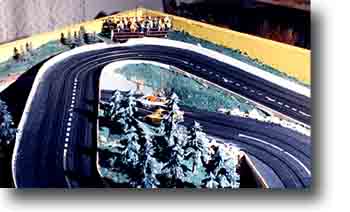
|
The 2nd ThunderRoad was HO scale. It was built when we lived in a Chicago apartment. We had no room for a permanent layout, so it was built in two pieces. The track pieces were the old fashioned lock and joiner Aurora type. |
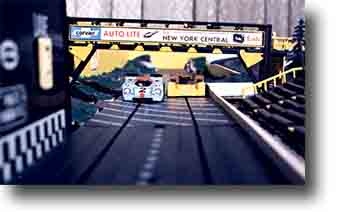
|
Using that as the basic pattern, the track was build on two pieces of 4x3 plywood, 5/8" thick. In the ends that joined were two holes that accepted 1/4' steel pins. The sides of the track were 1x4 pine, and each had a pull hasp mechanism to lock the two pieces of board together. |
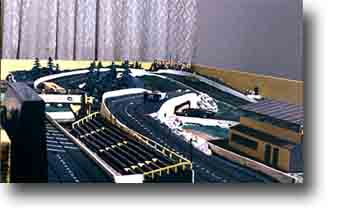
|
The tops of the side pieces were also drilled to accept pins, so the two halves could be lock together, one atop the other for transport. In spite of being a portable track, it had an overpass, and was fully landscaped. |
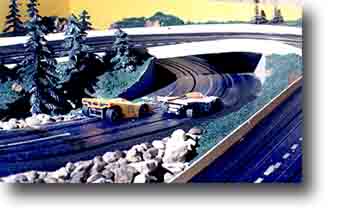
|
Careful planning was required in building the track so that the high places at one end of the layout corresponded with the low places at the other end, so it could be folded together. |
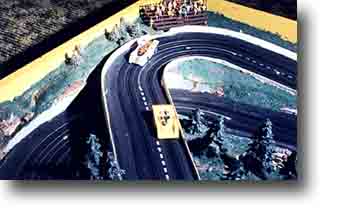
|
Shoulders for the track were created from H.O. scale model train roadbed, placing the guard rails about one inch away from the edge of the track. Guardrail walls were made of balsa wood and plaster, to simulate concrete walls. These worked fine in most places, but not at the end of long straight sections, where high speeds cause all too realistic damage to the walls themselves. |
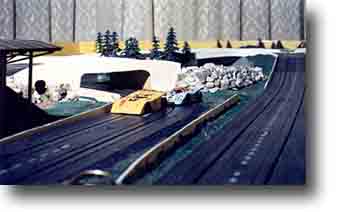
|
In spite of the rather compact dimensions of the layout, TRS 2 provided two fairly long straight sections and lots of good competitive racing. It also provided lots of cars on the floor, due to the relatively low side walls. This was especially true in the elevated areas where the track rose nearly to the height of the barriers. |
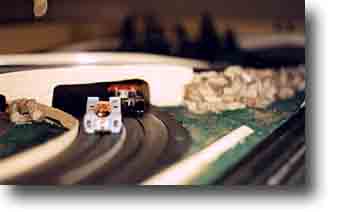
|
One thing I learned a little late was that the height of the bridge was too low. Because there were turns on either side of the bridge it was not unusual for cars to get trapped under the bridge, and there was not really good room to get an adult hand into the space. And yes, those are real rocks next to the bridge. |
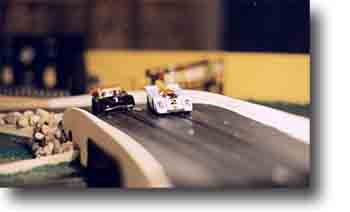
|
Barely visible in the background at the left is the Aurora electric lap counter. Yes, boys and girls, we really did count laps before there were computers. Really dates both me and the race track. |
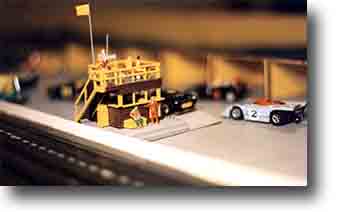
|
The entire track was landscaped, including a fairly detailed pit area. Structures for the layout were a combination of scratch-built and commercially available pieces like the Aurora Scoring Tower in the foreground. |
|
|
MORE THUNDERROAD HISTORY THUNDERROAD THREE! |
|
|
|
|
THANKS FOR COMING -- COME BACK SOON! |
|
Created - December 26, 2000 |